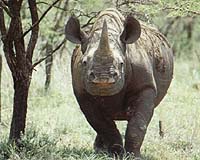| . |  |
. |
Reno NV (SPX) Jan 26, 2010 Butterfly populations in California are declining and, in some cases, moving to higher elevations in the Sierra Nevada due to climate change and loss of habitat, according to a study authored by biologist Matthew Forister, a University of Nevada, Reno assistant professor in the College of Science. "Caterpillars are important herbivores as well as a food source for small mammals and birds," Forister said. "They play a significant role in an ecosystem. Butterflies are used as indicators of the health of the environment worldwide. What's happening here is a globally recognized pattern, though this study is unique in representing North America." The study, to be published this week in the Proceedings of the National Academy of Sciences, is based on 35 years of data collected by Arthur Shapiro, professor of evolution and ecology at the University of California, Davis, and analyzed by a team headed by Forister, who was also a former doctoral student in Shapiro's lab. The analysis of the data found that climate has changed over the past three decades, with an increase in both maximum and minimum daily temperatures, shifting some low-elevation butterfly populations to higher elevations. For example, in recent years the field skipper butterfly seemed to react to global warming by expanding its range from northern California to central Washington State and Idaho. Now it's jumped the Sierra and invaded the western Great Basin, becoming established in California's Sierra Valley, and in the Carson Valley and near Verdi in Nevada. It also has been very responsive to spring temperatures, emerging nearly a month earlier than it did near Sacramento 30 years ago. Forister has been working on analyzing the data for more than five years. For the data on butterflies to be meaningful, decades of consistent sampling is required with long-term data sets, he said. The data are based on biweekly butterfly surveys taken at 10 sites in north-central California encompassing a variety of climates and habitats from sea level to tree line in the Sierra Nevada and including roughly 150 species-the largest data-set of its kind in North America and one of the two largest in the world. "Art did an unusual thing with his career," Forister said. "He singlehandedly undertook this data collection, on his own, set a regular sampling schedule and held to it for 30-plus years. He had specific questions in collecting this data, but in a way it was impossible to have predicted what would be found after so many decades of data collection." Using a battery of statistical approaches, Forister, Shapiro and their colleagues found that climate change alone cannot account in full for the deteriorating low-altitude fauna. They used information on land use to demonstrate that the declines also follow conversion of habitat from rural to urban and suburban types. Their most significant findings: + Butterfly diversity (the number of different species present) is falling fast at all the sites near sea level. It is declining more slowly or holding roughly constant in the mountains, except at tree line. + At tree line, butterfly diversity is actually going up, as lower-elevation species react to the warming climate by moving upslope to higher, cooler elevations. + Diversity among the high-elevation-specialist butterflies is beginning to fall as temperatures become uncomfortably warm for them. "It's a one-two punch, and a lot of lowland species are reeling from it," Shapiro said, noting that there has been much less habitat loss in the mountains than in the Central Valley and lower foothills so far. The study, "Compounded effects of climate change and habitat alteration shift patterns of butterfly diversity," is online at http://www.pnas.org. It was funded by the National Science Foundation. Additional authors are James Thorne, Joshua O'Brien and David Waetjen at the UC Davis Department of Environmental Science and Policy; Andrew McCall at Denison University in Ohio; and Nathan Sanders and James Fordyce at the University of Tennessee at Knoxville.
Related Links Forister's Great Basin Bug Lab Web Shapiro butterfly database University of Nevada, Reno Darwin Today At TerraDaily.com
 SAfrica steps up security after poachers kill 14 rhinos
SAfrica steps up security after poachers kill 14 rhinosJohannesburg (AFP) Jan 22, 2010 Poachers have killed 14 rhinos in South Africa this year, the national parks authority said Friday, announcing military patrols in the world-famous Kruger National Park. "These poachers are members of well-resourced syndicates and are also involved in chilling crimes like human trafficking, arms smuggling, prostitution and drug trafficking," said David Mabunda, chief of the South African Nat ... read more |
|
| The content herein, unless otherwise known to be public domain, are Copyright 1995-2009 - SpaceDaily. AFP and UPI Wire Stories are copyright Agence France-Presse and United Press International. ESA Portal Reports are copyright European Space Agency. All NASA sourced material is public domain. Additional copyrights may apply in whole or part to other bona fide parties. Advertising does not imply endorsement,agreement or approval of any opinions, statements or information provided by SpaceDaily on any Web page published or hosted by SpaceDaily. Privacy Statement |